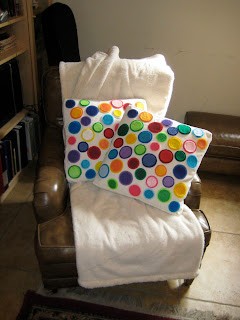Go Honey is our natural version of energy gel. Use it while exercising for a carb boost.
What is Energy Gel?
 Energy gels are thick carbohydrate syrups used to extend muscle energy (glycogen) during exercise. They provide simple and complex carbohydrates. Energy gels are packaged in palm-sized packets for athletes to suck syrup into the mouth. They provide about 100 Calories (17-25 g carbohydrate) per packet.
Energy gels are thick carbohydrate syrups used to extend muscle energy (glycogen) during exercise. They provide simple and complex carbohydrates. Energy gels are packaged in palm-sized packets for athletes to suck syrup into the mouth. They provide about 100 Calories (17-25 g carbohydrate) per packet.
Energy gels are designed to deliver a quick rise in blood sugar and maintain that glucose level for up to 45 minutes during exercise. Sometimes electrolytes and other "non-essentials" such as herbs and caffeine are added to the gel.
Honey is a great energy gel because it causes less of an insulin response than other sugars. Honey gives athletes a slower, more sustained energy spike than sugar. This means it creates a smaller post-sugar “fall” than other sugars. This is because of the complex mixture of sugars in honey. Honey contains dextrose (glucose chains), fructose, and at least 22 other, more complex, sugar types. These sugars are not found in nectar, but are formed during ripening and storage of honey by bee enzymes (Graham, 1997). This means they are more readily available for absorption by our tissues.
How To Use Go Honey as Energy Gel
Consume about 1/3 of packet with 250 mL water 15 minutes before starting a run and 45 min into the run. Repeat every hour throughout the duration of the run.
Athletes need to consume adequate water with energy gels to prevent dehydration. A good rule of thumb is about 250 mL (1 cup) of water for every 100 Calories consumed. When water is not consumed with energy gel, water leaves the body tissues, and enters the digestive tract to help digest it. This means less water for muscles and can lead to dehydration.
This product is not intended to replace proper diet and nutrition.
Why Honey?
- All-natural energy source
- No preservatives
- Complex mixture of sugars
- Honey yielded lower insulin response than sugars in 12 studies. Honey has GI of about 32 to 85, depending on the nectar source.
- Rich in anti-oxidants: Honey contains as many anti-oxidants as spinach, apples, oranges, and strawberries, according to a study by Gheldof and Engeseth (2003). Researcher Gross and his team (2004) found that consuming honey increased the level of antioxidants in the blood. Some antioxidants found in honey include chrysin, pinobanksin, vitamin C, catalase, and pinocembrin.
- Indefinite shelf-life
- Contains live bee enzymes
Why Our Honey?
- No processing (raw and unfiltered)
- No water added
- 100% domestic honey, local to Northern Utah
- Apiaries located in pesticide-free areas
- No flavoring added
- Conservation: The Honey Company beekeepers work to develop bee genetics to improve resistance to disease and Colony Collapse Disorder rather than medicating bees
- Go Honey Packages are free from BPA and phthalates
- Go Honey Packages are re-closable
- Go Honey Packages can withstand 150 pounds of pressure with the lid properly in place
What is the Glycemic Index?
The Glycemic Index (GI) is a ranking of carbohydrates based on their effect on blood glucose and insulin levels. Choosing low GI carbs reduces the risk of heart disease and diabetes and is key to sustainable weight loss. Carbs in low GI foods enter the bloodstream more slowly and causes less dramatic fluctuations in blood glucose levels. This means better energy balance, longer physical endurance, and a better refueling after exercise.
Glucose is assigned a GI of 100 and other carbohydrates are given a number compared to glucose. Low GI values are less than 55, 56-69 is medium, and 70 or larger is high GI. Honey ranges from 35-87 GI (median 56), depending on the variety and the sugar ratios in the honey. Typical USA honeys have GI below 55. This means honey spikes blood sugar much less than other sugars. Also, honey is twice as sweet as sugar and consumers can use about half as much to sweeten foods.














































